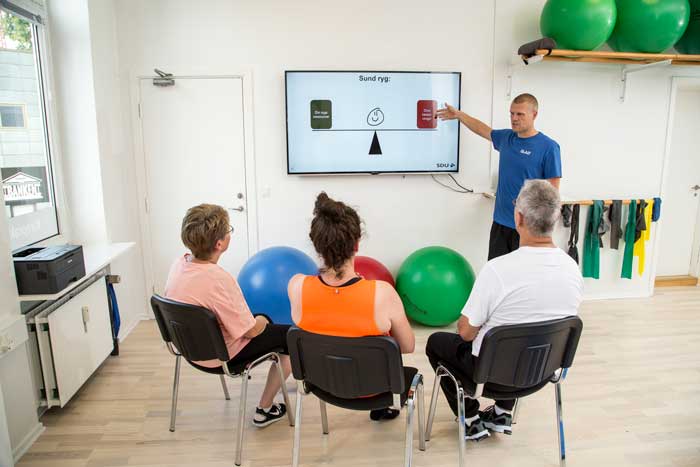
The goal of GLA:D®BACK is increased self-management through greater knowledge of the back and a better physical capacity.
GLA:D®BACK builds on a model that takes as its starting point the way for patients to manage their back, rather than a model that focuses on treating a specific diagnosis. This means that we assume that pain affects the way patients move, that particular movements which can maintain the pain, and that thoughts about what is wrong and what patients can and must not do can be just as inhibiting of normal functioning as the pain itself.
Patient education is central to GLA:D®BACK. The main messages are:
Training in GLA:D®BACK

